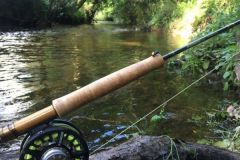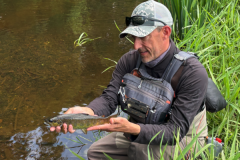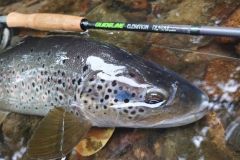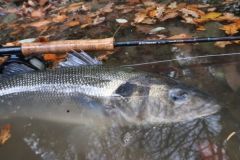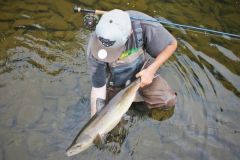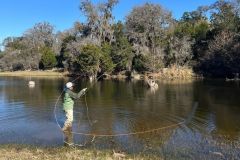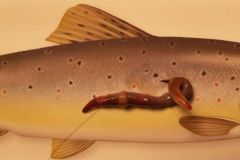The opening, alone or with friends?
Everyone did the opening in their own way.
Some people like to get back to the rivers with a circle of friends, because at the opening, we celebrate the return to the riverside!
Above all, they enjoy spending time with their fishing partners, exchanging information on new flies, rods and the latest acquisitions, as well as recalling great catches and anecdotes from past seasons. The picnic is almost more important than the fishing itself, and sometimes goes on and on!
Other anglers, like me, prefer to be alone to be in perfect harmony with nature and these rivers that we've missed so much for 6 months!
It's a moment to yourself, where you come and go at your own pace. You observe nature and take note of water levels and the changes that have taken place since the river closed. You take the "temperature" and see what conditions will be like in the coming weeks, which will be calmer but also more favorable for fishing.
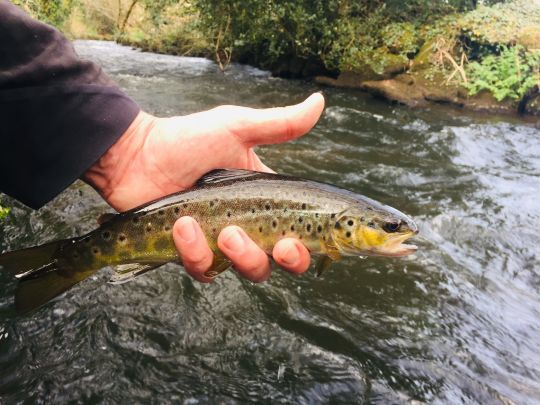
When to go?
There's no point in running the rivers at daybreak, even if some people enjoy it. Fish are rarely inclined to bite in the early hours of the morning, especially on a fly, even if you can catch fish.
Trout are emerging from winter weakened by spawning, and in the cold waters of the early season will only emerge for a few hours as the water temperature rises one or more degrees.
For years now, I've been favoring the 11:00 to 15:00 slot, as the fish will quickly come out to feed, and what's more, the vast majority of anglers will be eating at home or at the water's edge. This short â??repeatâ? is often the best time to catch early-season trout, especially on the fly.
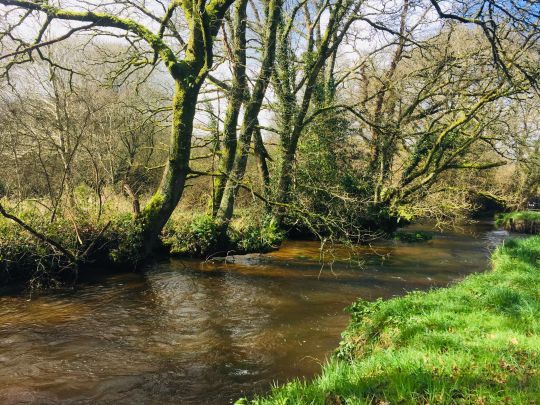
What sectors should you be looking for?
The higher and colder the water, the less active, or very briefly, the trout.
Wider, lowland rivers with more water will take longer to warm up, and I prefer the heads of basins, where the "water layer" is weaker and therefore quicker to rise in temperature, especially if the sun is out. There may even be a few hatchings of small baetis, march browns and sedges. The trout won't miss this opportunity to come close to the surface, even at the start of the season.
You need to choose sectors where there are more damping zones, as trout are cold-blooded and their metabolism is therefore linked to water temperature. They will not swim in currents where the loss of energy is greater, but will seek shelter on the edges or in all sectors where the current is broken by structures, in particular pebbles and areas of riprap, logjams, ... These are good hiding places, and trout can be protected from fast-moving currents to come and take a few nymphs or even hit the minnows, which are also looking for calmer areas.
Pool tails, mixed areas with slow to medium currents and positions close to the banks are often very good positions.
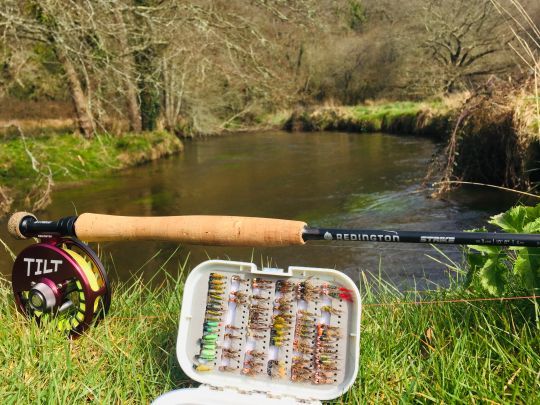
The choice of technique
For several years now, I've been fishing mainly with wire nymphs or NAF, which has become very fashionable due to its efficiency.
As trout are gobbling less and less, the younger generations of anglers are moving straight to nymphing with wire, to the detriment of dry fishing and other more traditional techniques such as drowning and streamer.
Older anglers have also taken up the challenge, adapting to the behavior of trout, 80% of which feed underwater. Why deprive yourself!
Even though this technique is mostly practised without line and the whipping action disappears, which many anglers dislike, it's a very interesting technique because of its technicality.
You'd think you'd just throw nymphs in the water to catch fish under the rod, which sometimes works, but in reality, line nymphing requires skill and a good ability to observe and analyse.
The success of this type of fishing lies in the quality of the drifts. This is not easy to achieve, as the nymph weight must always correspond to the depth and speed of the current, as well as to the activity of the trout (more or less detached from the bottom).
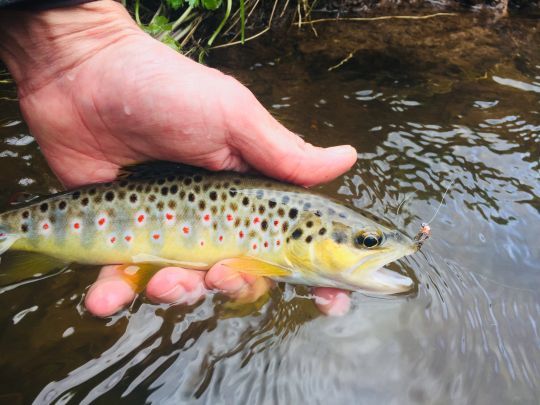
Of course, it will be possible to fish drowned, streamer fishing ¾ downstream, but over the years, I've found that line nymphing and streamer fishing with a line nymphing rod enables us to present our flies much better at the start of the season. Indeed, trout are not very mobile and active, and these two techniques allow you to pass very close to the fish and slowly, which is very effective unlike the other two techniques stated, where the trout will have to "fetch" the flies in the water layer.
However, as soon as the water warms up a little and the trout become a little more active, drowning and streamer fishing downstream can also be very productive. You'll rediscover the pleasure of casting a line and taking more pronounced hits.
Dry-fishing will be an option to keep on your radar, as it would be a shame not to have the pleasure of casting at a few trout enjoying a hatch! In some parts of France, the March Browns will bring out large trout as soon as they open, and even before (in second category).
Everyone practices in their own way, and the most important thing is to enjoy the technique you've chosen. For some, the result is important, while for others it's of little importance.
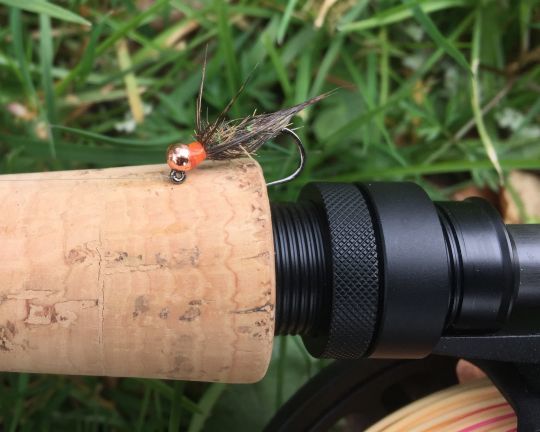
Insist and apply yourself to your drifts
There's no point running the whole river at the start of the season? For me, the most important thing is to identify suitable areas, or areas you've come to know over the years, and to fish them well. It's always a good idea to scout the spots a few days beforehand. Flow rates will be one of the most important factors to take into account.
Trout will be in a state of near lethargy, and good drifts will pay off. It is wiser to insist on good spots, even if it means repeating them several times in your fishing window, than to fish quickly in search of active fish. They're all in the same boat and will come out at the same times. Nevertheless, some areas will be more "productive", as the fish are on the move to spawn. Sometimes the trout are very localized, while others are more spread out along the river. Once again, this often depends on water temperature.
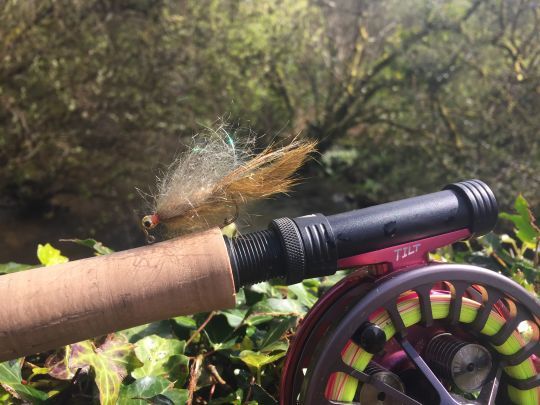
When using nymphs on wire, at the start of the season you need to choose good bites (hook size 10 to 14), favouring plump natural nymphs but with a coloured tag on the head or tail, particularly orange and chartreuse, which show up very well in waters pricked by the opening. Don't hesitate to lightly highlight your nymphs so that they pass close to or even on the bottom where the trout will be "stuck". The current is always weaker against the river bottom and near obstacles.
Remember to use short but precise drifts to get close to each position. Repeated passes can sometimes bring out an inactive trout.
Fish tightly while keeping a little freedom of drift, as your nymphs should swim naturally. At the start of the season, bites often occur when your nymph(s) are close to you and touching the bottom, whereas later on, bites may occur shortly after the flies have sunk (when the trout are active and take off to fetch them) and at the end of the drift and/or when the nymphs come up, which may trigger their aggressiveness. This is rarer in cold water, but it can happen.
When streamer-fishing, gently waddling your fly near obstacles and edges can save the day, and even trigger a beautiful fish to enjoy a nice bite!
Welcome back to the waterfront and have a great time alone or with friends!




